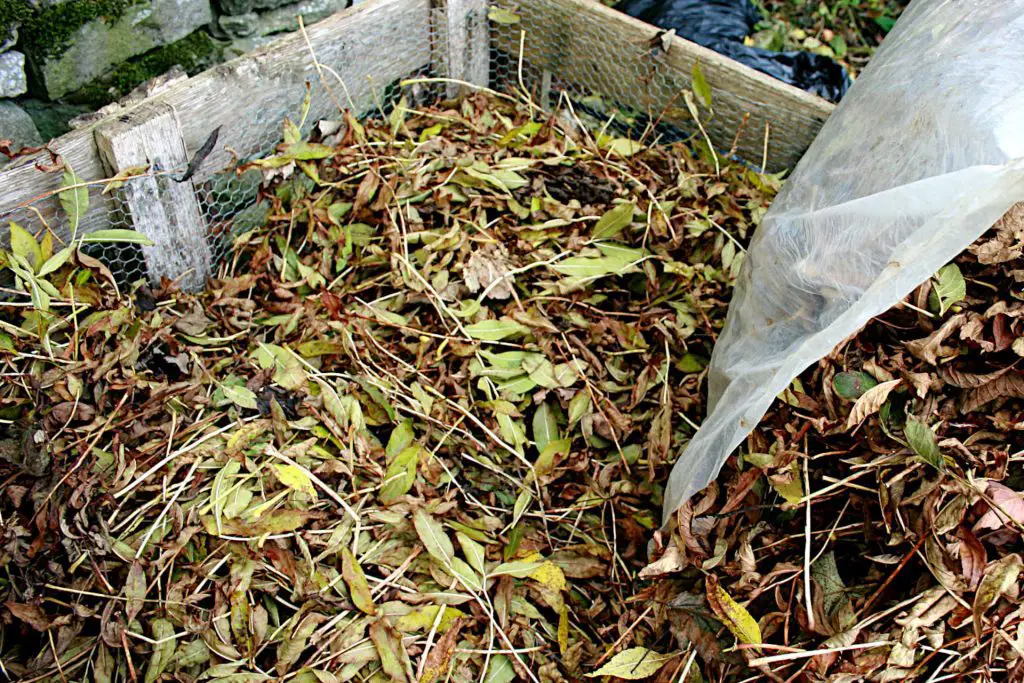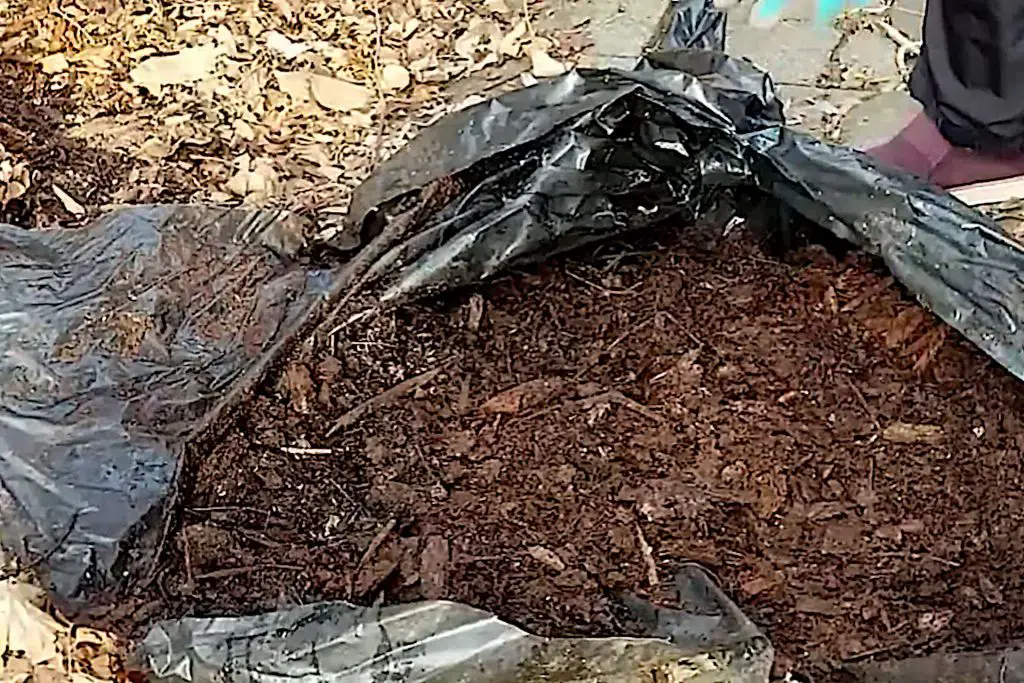The Benefits of Making Leaf Mold – November Gardening Tasks
- Creating leaf mold is a very simple form and passive form of composting that pretty much anybody can do.
- It involves collecting and composting fall leaves without any other organic material soil.
- It produces a high-quality soil amendment in between 6 to 12 months, depending on the process.
- The resulting humus will help improve both soil structure and health.
As November hits, we are well into fall, and depending on your climate zone, you could be dealing with a lawn or yard full of fallen leaves.
Raking up these leaves might be a chore but you are in possession of valuable organic material that if used correctly can help improve your garden. There are several ways that this material can be used, from saving it to using it in your general compost, or turned into liquid fertilizer.
In simple terms, leaf mold is a form of compost except that the only material that is broken down is leaves. Once turned into humus it can be incorporated into your garden soil to help improve the health and resilience of your plants.
What is Leaf Mold?

How to Make Leaf Mold?
There are a number of ways in which you can make leaf mold.
The easiest method is similar to that of traditional composting in that you create a pile but differs in that you only add fall leaves and nothing else. You can leave this to sit and the leaves will break down over a couple of years and turn into leaf mold.
The process is slow because you only have carbon-rich materials decomposing and this decomposition process is largely caused by fungi and not microorganisms as the pile, if just left as a passive process, will not heat up.
The process can be speeded up by shredding the leaves and aerating the pile. You can aerate the pile through regular turning or running pipes with air holes through the pile. This will help the pile heat and create bacteria to aid the fungi in the decomposition process. If, in addition, you shred the leaves you provide more surface area for the bacteria to attack helping the leaves break down much more quickly.
The Bag Method
An alternative way to produce leaf mold is by using the bag method. Fill large plastic bags with the leaves that you have collected. Punch small holes with a screwdriver into the bag allowing air to get in. Ensure the leaves are moist and put the bag or bags in a warm, shady spot.
The plastic will help the leaves in the bag retain heat and moisture, and, with the air circulation provided by the holes, the decomposition process should take between six to twelve months before you have ready-to-use leaf mold humus.

Leeching Nutrients
If you are more interested in the nutrients that the leaves possess than in creating a solid amendment, then there is a way to get the nutrients out of the leaves much more quickly.
This can be done by soaking the leaves in a barrel of water for between 24 to 72 hours. During this process, most of the nutrients will leach out of the leaves into the water giving you a fertilizer solution.
It should be noted though that leaf mold has very limited macro-nutrient content, far less than you would get from general composting. This is due to the fact that leaves, being a carbon-rich organic material, contain very little nitrogen, with a carbon-to-nitrogen ratio of around 80:1 (C/N) for fall leaves.
However, that being said, the liquid fertilizer produced by the leeching process could be beneficial for indoor plants and for use in hydroponic nutrient solutions.
How to Use Your Leaf Mold
You can apply your leaf mold to your soil in a couple of different ways. You can either till it into the soil or you can apply it as a mulch.
If you are tilling your soil you can add the leaf mold compost as an amendment after you have tilled. If you don’t till then you can apply around a 1½ to 2-inch thick layer of leaf mold compost as mulch to the surface. The worms and bugs should help naturally ensure that the material is incorporated into the soil.
Can You Use Leaf Mold on Your Lawn
Yes, in fact, it is a very good way of improving the underlying substrate that your lawn grows from. Putting down leaf mold aids in moisture retention, it can help to prevent weeds from growing through, and it allows the soil temperature to be better regulated.
Although restricted in macronutrients the limited nitrogen content will prevent any possibility of leaf burn and any nutrients that it does contain will be released over a longer period of time. However, it does contain reasonable amounts of the micronutrients such as boron and iron, both essential for grass health.
What are the Benefits of Leaf Mold

There are various benefits to creating and utilizing leaf mold and these range from improving the condition of the soil, adding nutrients, and helping reduce and prevent soil erosion.
Soil Amendment
Although leaf mold has a limited amount of nutrients due to the lack of nitrogen in the end humus, it still acts as a great amendment to your soil. It helps by improving the drainage and moisture holding capacity as well as aiding aeration, all particularly useful if you have heavy clay soils.
Nutrients
Leaf mold is not totally devoid of nutrients and can help improve the nutrient levels of your soil. The type of leaves that you have used can increase the nutrient values with leaves from deciduous trees having higher nitrogen levels.
On average though, in regards to the nitrogen, phosphorous, and potassium levels of leaf mold compost, it contains around 0.66% Nitrogen, 0.05% Phosphorous, and 0.1% Potassium, which are very small levels.
However, it does contain a considerable amount of micronutrients and salts in the form of sulfur, boron, iron, manganese, zinc, and sodium.
Preventing soil erosion
If your soil is prone to soil erosion then leaf mold can help limit or prevent damage. When used as a mulch because of its ability to absorb water it can protect and combine with fine soil, improving the overall quality and limiting the possibility of erosion.
Summary: Making Leaf Mold One of Your November Gardening Tasks
As we have discussed there are enormous benefits to making leaf mold one of your November gardening tasks. It is a very simple form and passive form of composting that pretty much anybody can do. It deals with the problem of fallen leaves turning them into excellent soil amendment with a limited, nutrient value.
It can be used in your garden to help improve both soil structure and health helping your plants to become more resilient and thrive.
